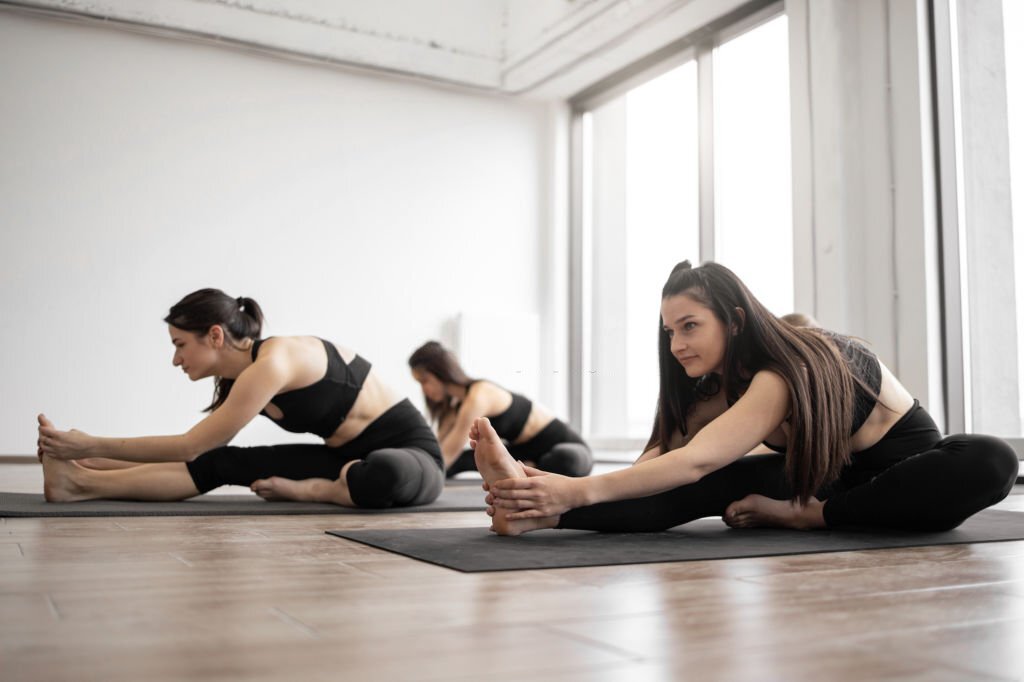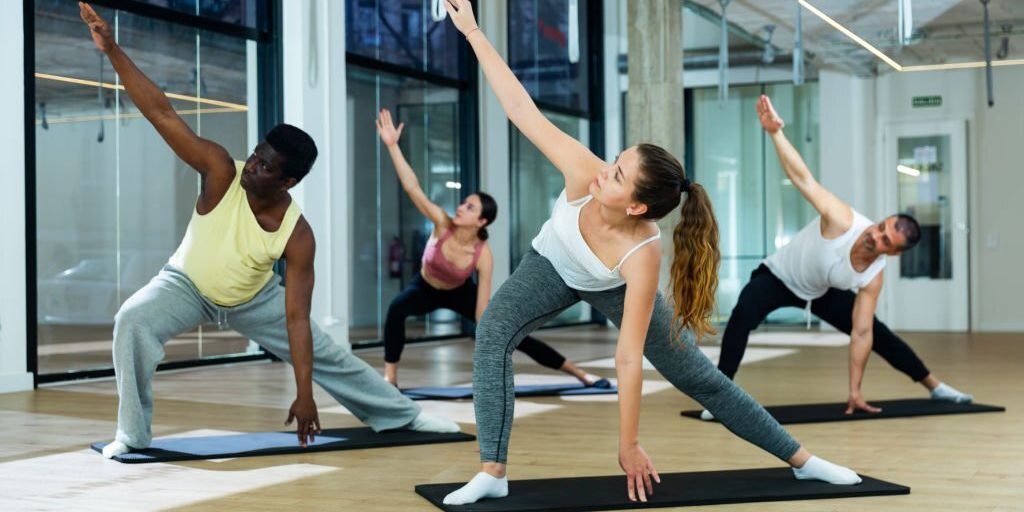Yoga is a physical, mental, and spiritual practice that has been used for centuries to promote physical and mental health. The practice of yoga involves postures, breathing exercises, and relaxation methods. However, to fully reap these benefits and prevent injuries, it is essential to prioritize proper alignment in your yoga practice. Proper alignment involves positioning your body in a way that optimizes stability, balance, and energy flow. In this blog post, we will explore the importance of proper alignment in yoga, the potential risks of misalignment, and how to cultivate alignment to enhance your practice and prevent injuries.
Table of Contents
Understanding Alignment in Yoga
Proper alignment in a yoga posture helps to ensure that the body is safely and correctly in that particular pose. Without proper alignment, the yogi is more likely to experience muscle strain and joint pain in the pose. This is because using proper alignment will have the muscles, joints, and connective tissues in their optimal position. In some yoga poses, proper alignment encourages the muscles to be lightly engaged or lengthened while other muscles are being used. Using the right alignment also helps to ensure that the joints are stable and free from strain. Additionally, using proper alignment when practicing poses helps the body to move in a way that is energy efficient. This efficiency reduces fatigue and the risk of injury.
Potential Risks of Misalignment
Proper alignment is not only important for injury prevention, but can also enhance the benefits of a yoga practice. If a body is properly aligned, the yogi is able to maximize the physical and mental benefits of the practice. Being able to sustain a pose in proper alignment allows the yogi to deepen the pose and receive the maximum benefits. Working with proper alignment can also help to improve body awareness, strength, endurance, and flexibility.
- Strain and Overuse Injuries: Learn how misalignment can lead to strain and overuse injuries, such as muscle imbalances, tendonitis, and joint pain.
- Joint Instability and Discomfort: Understand how improper alignment can compromise joint stability, leading to discomfort and an increased risk of joint injuries.
- Uneven Distribution of Weight and Pressure: Explore the consequences of misaligned weight distribution, including undue stress on specific body parts and potential strain on supporting structures.
Alignment can take time to learn and perfect, and it is important to practice patience and to listen to the body as one learns to use proper alignment. Although some postures can be physically challenging, striving for proper alignment with every pose is key to progressing in one’s practice. Some yoga teachers offer personalized alignment cues for each student. This can be particularly helpful for those who are just beginning to learn about proper alignment.
Cultivating Alignment in Your Practice
When performing yoga poses, it is essential to create a stable foundation and follow directions for proper alignment throughout the pose. This includes ensuring the feet, legs, spine, and head are all in the correct position. When bringing awareness to the body and how it is aligned in a pose, it is important to ask oneself if there is any unnecessary tension in any area. If so, making small adjustments can help improve the alignment and comfort in the pose.
- Body Awareness and Mindful Movement: Cultivate body awareness and mindfulness to observe and adjust your alignment during your yoga practice.
- Listening to Your Body: Learn to listen to your body’s signals and sensations, honoring its limitations and finding the balance between effort and ease.
- Utilizing Props and Modifications: Utilize props and modifications to support proper alignment, allowing you to access the benefits of each asana safely and effectively.
- Seeking Guidance from Experienced Teachers: Seek guidance from experienced yoga teachers who can provide personalized cues, adjustments, and insights to help you refine your alignment.
Key Alignment Principles
- Foundation and Grounding: Understand the importance of a stable foundation, connecting with the earth, and grounding your body to create a solid base for your practice.
- Core Engagement and Stability: Learn how engaging and activating your core muscles helps maintain stability, protect the spine, and enhance overall alignment.
- Spinal Alignment and Neutral Position: Explore the significance of maintaining a neutral spine and proper alignment of the vertebrae, promoting healthy posture and minimizing strain.
- Joint Alignment and Range of Motion: Discover the importance of aligning your joints in their optimal position to maximize range of motion, prevent undue stress, and promote joint longevity.
- Balanced Muscle Engagement: Understand the role of balanced muscle engagement in maintaining alignment and preventing muscle imbalances, helping you move with fluidity and ease.
Alignment in Different Yoga Asanas

- Standing Poses: Learn how to align your feet, legs, hips, and spine in standing poses, fostering stability, balance, and proper weight distribution.
- Forward Folds: Explore alignment cues for forward folds to protect the spine, lengthen the hamstrings, and release tension in the back and neck.
- Backbends: Understand the key alignment principles for backbends, including proper engagement of the core, opening of the chest, and maintaining a healthy curvature of the spine.
- Twists: Discover how to align your spine and hips in twists, promoting spinal mobility, detoxification, and enhanced digestion.
- Inversions: Explore alignment cues for inversions, such as headstands and shoulder stands, to ensure proper weight distribution, stability, and safety in these challenging poses.
Practicing with Awareness and Intention
Moving with Consciousness and Intention: Embrace the practice of moving consciously and with intention, paying attention to alignment cues and subtle adjustments throughout your practice.
Embracing Modifications and Resting as Needed: Honor your body’s needs by embracing modifications and taking rest when necessary, allowing yourself to practice in a way that supports your overall well-being.
By prioritizing proper alignment in your yoga practice, you can prevent injuries, enhance the benefits of each asana, and cultivate a deeper mind-body connection. Embrace the journey of exploring alignment principles, listening to your body, and seeking guidance from experienced teachers to develop a safe, effective, and transformative yoga practice.
Conclusion
Proper alignment in yoga is crucial for both beginners and experienced practitioners alike. By understanding and implementing alignment principles, you can prevent injuries, enhance the benefits of your practice, and cultivate a deeper mind-body connection. Remember to prioritize body awareness, listen to your body’s signals, utilize props and modifications when needed, and seek guidance from experienced teachers. As you integrate proper alignment into your yoga practice, you will experience increased stability, improved posture, enhanced strength and flexibility, and a greater sense of overall well-being.
Frequently Asked Questions (FAQs)
Q1: Can I practice yoga without focusing on alignment?
While you can practice yoga without solely focusing on alignment, prioritizing proper alignment is highly recommended. It helps prevent injuries, ensures that you engage the right muscles, and allows for the optimal flow of energy in the body. Alignment also enhances the physical and mental benefits of each asana.
Q2: How can I develop body awareness for proper alignment?
Developing body awareness takes time and practice. Start by paying attention to the sensations in your body during your practice. Notice areas of tension or discomfort and explore different alignment cues to find what feels right for your body. Regular practice and mindfulness will gradually enhance your body awareness.
Q3: Can I use props to support alignment in my practice?
Absolutely! Props such as blocks, straps, blankets, and bolsters can be incredibly helpful in supporting proper alignment. They provide stability, modify the intensity of an asana, and assist in achieving optimal alignment. Experiment with different props to find what works best for your body and practice.
Q4: What should I do if I feel pain or discomfort during a pose?
If you experience pain or discomfort during a pose, it’s essential to listen to your body and back off or modify the pose accordingly. Pain is not a sign of progress in yoga. Consult with a qualified yoga teacher or healthcare professional if you consistently experience pain in a particular pose or if the discomfort persists.
Q5: How can I ensure proper alignment in inversions or advanced poses?
Inversions and advanced poses require a strong foundation and proper alignment to ensure safety. It is advisable to learn these poses under the guidance of an experienced yoga teacher. They can provide cues, adjustments, and necessary modifications to help you maintain proper alignment and avoid potential risks.
Q6: Can I apply alignment principles outside of my yoga practice?
Absolutely! Alignment principles extend beyond your yoga mat and can be applied to your daily life. Practicing proper alignment in your posture, movement, and daily activities can help prevent injuries, reduce strain on the body, and promote overall well-being.








